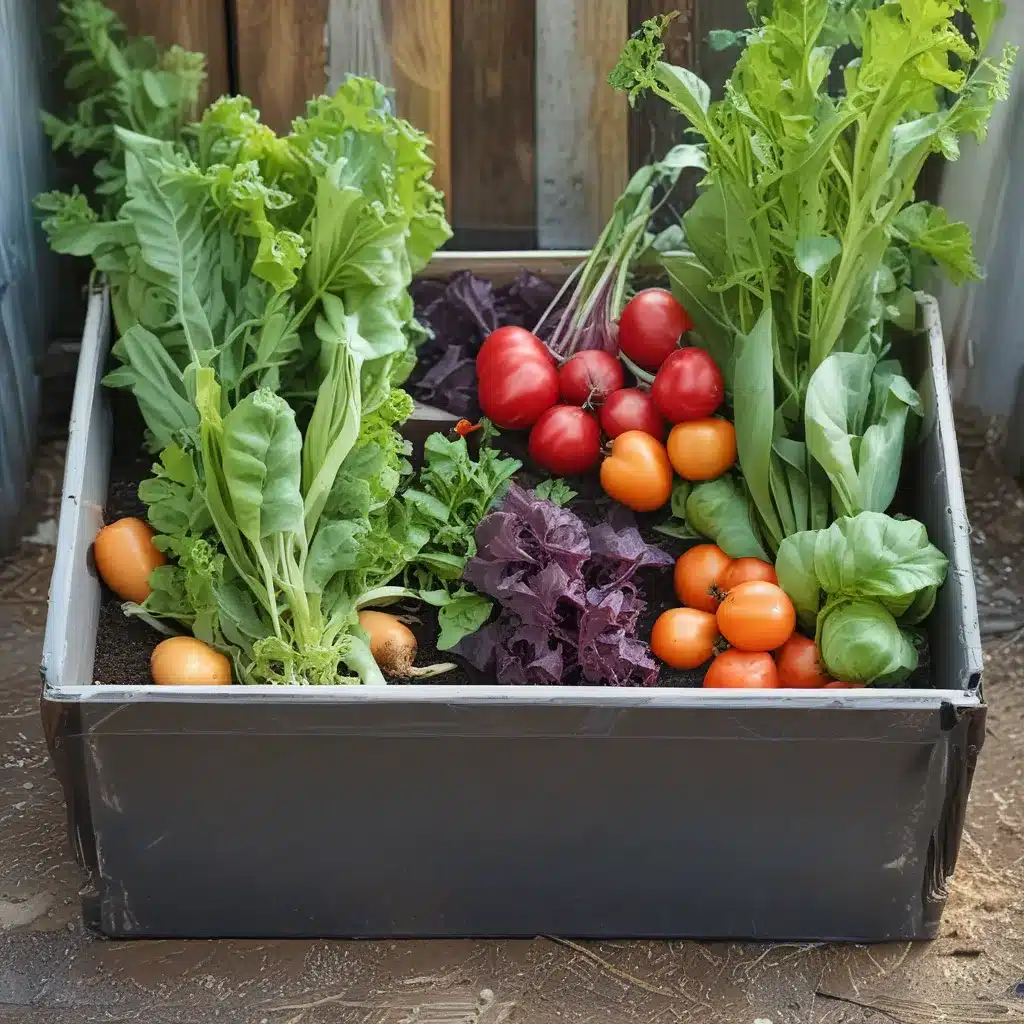Containers, Convenience, and Captivating Edibles
If you don’t have the space for a full-blown vegetable garden, don’t worry – you can still enjoy the fresh flavors and beauty of homegrown produce right from your own backyard, balcony, or patio. Container gardening is the perfect solution for urban dwellers, apartment residents, and homeowners with limited outdoor space. And let me tell you, I’ve become quite the container gardening expert over the years.
It all started back in my grad school days when I had a cozy little apartment with a southeast-facing balcony. The space wasn’t ideal, but it had just enough sun to produce a bountiful harvest of bell peppers and a lone, yet incredibly prolific, cherry tomato plant. I was hooked! From that point on, I’ve been experimenting with vegetable container gardening at every opportunity, and let me tell you, the benefits just keep on growing.
The Joys of Container Gardening
One of the biggest advantages of container gardening is the ability to control your plants’ environment. As I’ve learned the hard way, some veggies thrive in full sun, while others prefer a bit of afternoon shade. With containers, I can easily reposition my plants to ensure they’re getting the perfect amount of light throughout the day. And when the weather takes a turn, it’s a whole lot easier to protect my potted plants from heavy rain or severe storms than it is to safeguard an entire in-ground garden.
Another perk that’s become increasingly important to me over the years is the accessibility factor. As a self-proclaimed “seasoned” gardener, I really appreciate being able to tend to my plants without having to constantly bend, kneel, or crawl around on the ground. A simple potting bench or a few plant stands have made all the difference in keeping me upright and comfortable while I work.
And let’s not forget the sheer beauty of vegetable plants. I love how my deck transforms into a vibrant, edible oasis when it’s packed with tomatoes, peppers, and trailing vines. It’s like having a living work of art right outside my door. Plus, I get to experiment with all sorts of unique and colorful varieties that you won’t find in the grocery store, like ginger, galangal, and lemongrass.
Choosing the Right Containers
When it comes to container gardening, the options are virtually endless. You can use everything from traditional pots and planters to repurposed household items like storage tubs and laundry baskets. The key is to make sure your container has adequate drainage and is the appropriate size for the plants you want to grow.
For larger, heavy-feeding vegetables like tomatoes, peppers, and eggplants, I like to use large storage tubs. They’re incredibly sturdy, roomy, and have built-in handles to make them easy to move around. Plus, they’re quite economical compared to the oversized containers you’ll find at the garden center.
When it comes to the material, I prefer to stick with plastic or glazed ceramic pots. Terracotta can be beautiful, but it tends to dry out more quickly, which means I have to stay on top of watering more diligently. And for plants that have a tendency to get top-heavy, like peppers and green beans, I’ll add a layer of pebbles to the bottom of the pot to help keep them stable and upright.
Soil, Fertility, and Watering
One of the biggest challenges in container gardening is maintaining the perfect soil conditions for your plants. I’ve found that a homemade blend of potting soil, compost, peat moss, and perlite works best. This custom mix ensures my veggies have the necessary nutrients and proper drainage to thrive.
Feeding your container plants is also crucial, as they’ll quickly deplete the soil of essential nutrients. I like to use an organic fish emulsion or a balanced vegetable fertilizer, applying it every two weeks or so to keep my plants well-nourished and productive.
And, of course, watering is a constant concern in container gardening. I’ve found that using ollas – those unglazed clay pots that slowly release moisture into the soil – is a game-changer. It takes the guesswork out of watering and ensures my plants have a steady supply of hydration, even on the hottest, driest days.
Choosing the Right Veggies
When it comes to selecting the best vegetables for your container garden, the options are more varied than you might think. I’ve had great success with tomatoes, peppers, eggplants, cucumbers, radishes, potatoes, and a wide variety of leafy greens and herbs. The key is to look for compact, bush-type varieties that are well-suited for growing in smaller spaces.
And don’t be afraid to get a little creative! My deck is a veritable oasis of edible delights, with everything from classic favorites to more unique additions like ginger, galangal, and lemongrass. It’s like having my own little culinary laboratory right at my fingertips.
So, if you’re ready to dip your toes into the world of vegetable gardening but don’t have the space for a full-blown plot, consider giving container gardening a try. With the right setup and a bit of TLC, you can enjoy a bountiful harvest of fresh, homegrown produce right from the comfort of your own backyard, balcony, or patio. And who knows, you might just discover a new passion for growing your own food – just like I did all those years ago.
Ready to get started? Head on over to A1 Landscape Construction to find all the supplies and resources you need to create your very own container vegetable garden. Happy planting!




